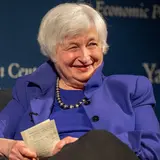Dividend bans: ECB extends, APRA eases, and BoE promises further analysis
European, Australian, and British regulators took divergent paths on bank dividend guidance this week.
The European Central Bank extended its guidance on dividend suspensions from October to January, the Australian Prudential Regulation Authority eased its guidance, and the Bank of England said it will decide later this year whether to extend dividend restrictions into 2021.
The purpose of dividend restrictions is to ensure banks have enough capital to cover losses while preserving the lending activities essential for households and firms. As of early May, a BIS report counted 11 jurisdictions that had taken action to suspend or limit dividends or share repurchases in the second quarter of 2020, including Europe, Australia, and the UK. In June, the US Federal Reserve also limited growth in dividends and banned share buybacks in the third quarter.
On July 28, the European Central Bank (ECB) announced it has extended its recommendation that eurozone banks suspend dividend payments and share buybacks until January 2021.
The ECB emphasized that the updated recommendation remains “temporary and exceptional” and is aimed at preserving banks’ capacity to absorb losses and support the economy amidst uncertainty caused by the COVID-19 lockdown. The ECB noted that it would keep evaluating the economic situation and consider whether to further suspend distributions after January 1, 2021.
While the ECB’s recommendation on dividends is not legally binding, Andrea Enria, the head of the ECB’s supervisory board, noted that the ECB’s Single Supervisory Mechanism (SSM) could issue binding requirements on a bank-by-bank basis.
On the same day, the ECB’s SSM also published the aggregate results of its vulnerability analysis. The SSM assessed banks under three scenarios: (i) a baseline scenario that does not consider the impact of COVID-19, (ii) a COVID-19 central scenario assuming an 8.7% decline in gross domestic product (GDP) in 2020, and (iii) a COVID-19 severe scenario with a 12.6% GDP decline in 2020. Under the COVID-19 central scenario, banks were found to be resilient, with an average capital depletion of 1.9 percentage points. But the severe scenario leads to a capital depletion of 5.7 percentage points and the ECB noted that “several banks would need to take action to maintain compliance with their minimum capital requirements.”
Given that uncertainty, the ECB determined the need for its temporary and exceptional recommendation to suspend dividends. The Bank also asked banks “to be extremely moderate with regard to variable remuneration payments.” The ECB underscored that banks with sustainable capital position could resume dividend payments “once the uncertainty requiring this temporary and exceptional recommendation subsides.”
Also on July 28, in noting the ECB’s announcement, the Bank of England (BOE) announced that its Prudential Regulatory Authority (PRA) would undertake in the fourth quarter an assessment of distribution plans at banks beyond the end of 2020. According to the statement, the assessment will be “based on the current and projected capital positions of the banks and will take into account the level of uncertainty on the future path of the economy, market conditions, and capital trajectories prevailing at that time.”
On July 29, Australian Prudential Regulation Authority (APRA) updated guidance on capital management for banks and insurers. Under the updated guidance, banks can now pay out their dividends while seeking to “retain at least half of their earnings when making decisions on capital distributions”. Three of the country’s four major banks (Westpac, ANZ and National Australia Bank) have either deferred or cut dividend payments following the earlier recommendation by the APRA. The APRA notes that decline of the uncertainty in the economic outlook as the reason to ease the dividend restriction policy.
While banks in eurozone and the UK have followed the supervisory recommendations to suspend dividends, US banks so far have been paying out dividends (see here and here). The Fed has acted more slowly than many of its peers. However, the largest US banks voluntarily suspended buybacks in the second quarter. In June, in announcing the results of its annual stress test, the Fed said it would limit third-quarter dividends to the average payout over the prior four quarters or net income, whichever is lower. It also restricted buybacks in the third quarter. The Fed said it will conduct another stress test later this year to determine whether to take additional action on payouts to shareholders.



